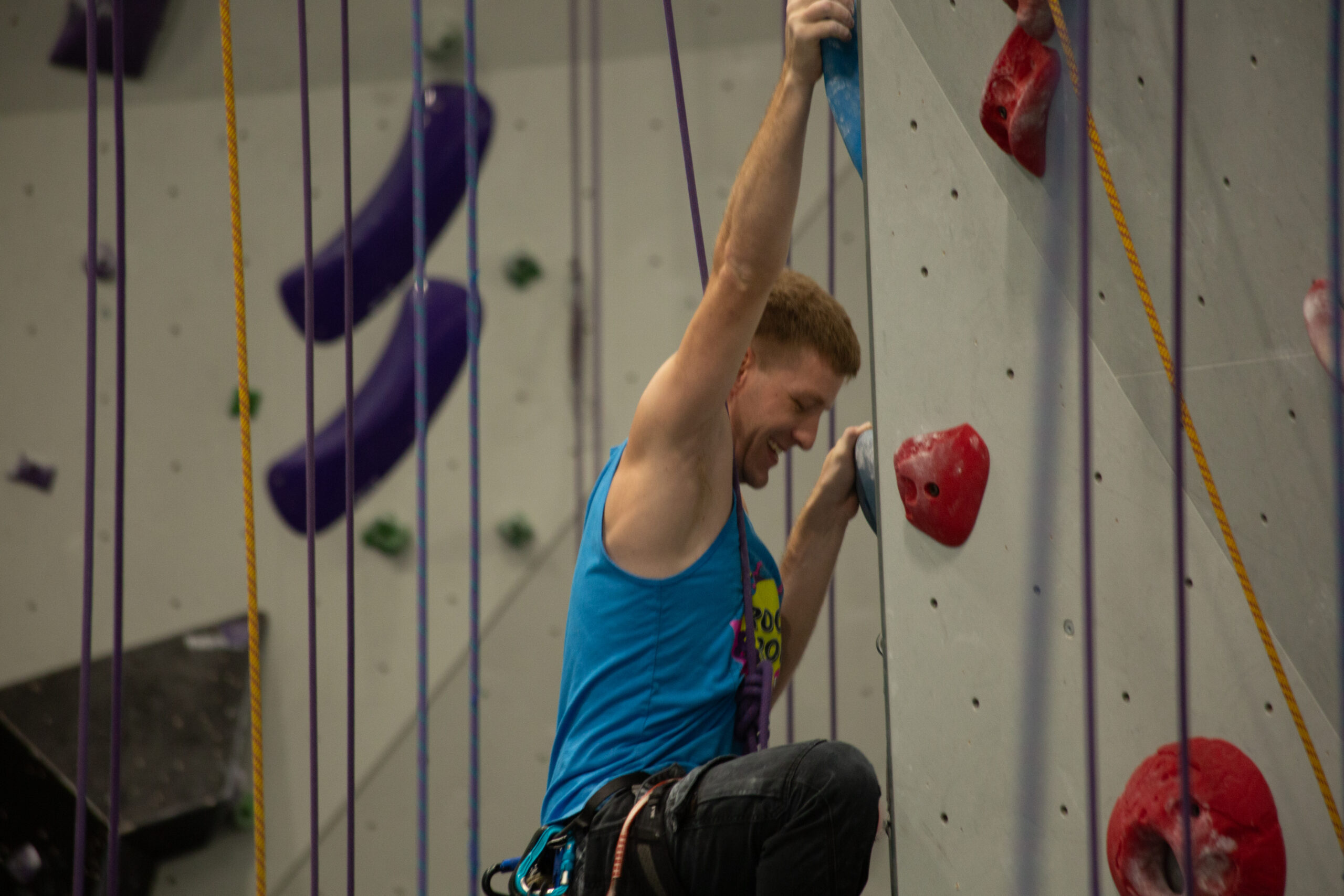Rock climbing is a dynamic way to engage multiple muscle groups while pushing your physical and mental boundaries. At Send It Climbing Gym, we offer a place where you can challenge yourself and achieve new fitness levels. Understanding which muscles are involved in rock climbing can help you appreciate the comprehensive workout it provides and tailor your training to enhance your climbing performance. Whether you’re climbing to conquer heights in Norfolk, VA, or to bolster your physical fitness, understanding “what muscles does rock climbing work?” can transform your approach to this challenging sport and enhance both your performance and enjoyment.
Climbing for Muscle Engagement – What Muscles Does Rock Climbing Work Out?
Rock climbing is a comprehensive workout that engages a ton of muscles in your body, many of which tend to get neglected when you are doing traditional workouts. Here’s how a simple act of climbing harnesses the collective strength of your body’s major muscle groups.
Upper Body Muscles
When you use rock climbing for your workout, you might not even realize that you’re executing a high-intensity workout that targets your key upper body muscles. You need these muscles for the pulling, holding, and stabilizing movements that climbing demands. Strengthening these rock climbing muscles helps improve your climbing abilities and actually protects you from injuries, making each session an effective blend of adrenaline and muscle conditioning.
- Latissimus Dorsi (Lats): You need these large back muscles to help pull yourself up the wall. When you climb, you activate these and ultimately improve the strength and endurance of your upper body.
- Trapezius and Rhomboids: When you rock climb, you use these muscles to stabilize your shoulders and help in the pulling motion throughout your vertical movement.
- Biceps and Triceps: Your arms get a rigorous workout as your biceps help in pulling motions while the triceps stabilize your arms during holds.
- Deltoids and Rotator Cuff: Throughout your rock climbing session, your shoulder muscles are constantly engaged to help you reach and hold onto new grips, providing stability and strength to the shoulder joint.
Core and Torso
You need strong core and torso muscles for rock climbing, acting as the central link between your upper and lower body movements. A strong core helps with your balance and stability against the climbing wall, and it also improves your ability to perform complex moves.
- Rectus Abdominis and Obliques: Your climbing maneuvers require a solid core, and rock climbing sessions help engage these muscles as you balance against the wall.
- Transverse Abdominis: This deep core muscle helps you keep good form and posture during a climb.
- Glutes and Hip Flexors: Often underestimated, these muscles support your movements as you lift your legs and stabilize your pelvis. You need them to be strong for the upward movement required for rock climbing.
Lower Body Muscles
While the upper body muscles usually take the spotlight when we talk about rock climbing fitness, the lower body muscles actually play an equally important role in your climbing workout. You need strong lower body muscles to power up the wall, and they help you maintain control and stability throughout your climb. So what muscles does rock climbing work out in the lower body?
- Quadriceps and Hamstrings: You work your thigh muscles when you push off from the footholds and control your body during dynamic movements associated with rock climbing.
- Calves: Essential for all the precise footwork on tiny holds, your calves help maintain balance and support your body’s weight as you climb.
- Feet and Ankles: The muscles in your feet and around your ankles work tirelessly to grip the holds, providing a foundation for your climbs.
The Full-Body Benefits of Climbing
Rock climbing offers a unique combination of strength training and a cardiovascular workout, making it an excellent choice when you’re looking to incorporate physical fitness in an exciting and dynamic way. Here’s why rock climbing can be your next go-to exercise:
- Enhanced Muscular Endurance: Continuous climbing sessions increase the endurance of your muscle groups, allowing you to climb longer and harder.
- Increased Flexibility and Range of Motion: Navigating various holds and angles improves your body’s flexibility and agility.
- Boosted Cardiovascular Health: Rock climbing as a workout increases your heart rate, helping to improve your overall cardiovascular health.
- Mental Strength and Problem Solving: This physical activity also challenges your mind, requiring focus, determination, and strategic thinking, which can help with your mental resilience.

Engage Your Muscles With Rock Climbing at Send It Climbing Gym
At Send It Climbing Gym, we cater to climbers of all skill levels who are looking to build muscles with rock climbing. If you’re ready to engage your body’s muscles in ways you’ve never imagined, we’re here to guide and support you on that journey. Climbing in Norfolk, VA, is such a good choice for your workout because of the comprehensive physical and mental benefits that each ascent offers. Whether you’re looking to strengthen your body, challenge your mind, or just have some fun, we’ve got the wall for it! Contact us today to get started!
